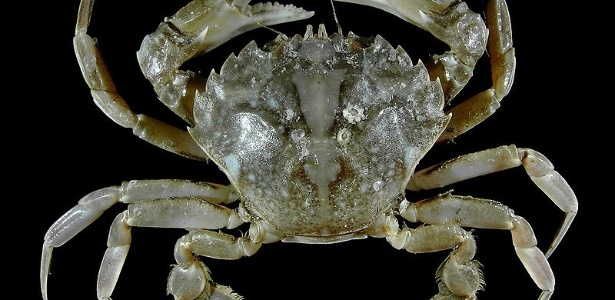Inglês - Understanding Major Nutrients
Understanding Major Nutrients
Objetivo geral
Compreender textos informativos em inglês.
Objetivos específicos
Identificar o tema e os assuntos do texto, reconhecer as fontes consultadas, estabelecer relações com outros textos e/ou contextos.
Conteúdo
Leitura com compreensão de texto informativo, destaque de palavras-chave, frases e construção de texto-síntese. Desdobramentos: pesquisa e elaboração de cardápio.
Procedimentos
Importante: é necessário que os alunos tenham o texto que apresentamos mais abaixo em mãos.
1) Inicialmente provoque uma tempestade de idéias envolvendo dietas alimentares e anote no quadro, em inglês, as palavras ou expressões que vêm à mente das pessoas, quando o assunto é o que fazer para uma dieta saudável.
2) Peça para que observem o texto como um todo e identifiquem sua origem e autoria.
3) A partir do título, solicite que formulem hipóteses sobre o conteúdo do texto.
4) Faça uma leitura em voz alta de cada parágrafo, a qual deverá ser atentamente acompanhada pelos alunos, para que reconheçam seu sentido articulando-o às hipóteses criadas a partir da reflexão sobre o título. Auxilie-os com Wh- questions (who, what, when, where, how, how much, how many?).
5) A cada parágrafo, peça para que citem as palavras-chave e anote-as no quadro.
6) A seguir, oriente a utilização de dicionário, caso julgue necessário e ao retomar a aula, faça com que a classe socialize as pesquisas realizadas, construindo um vocabulário com as palavras e/ou expressões que são geralmente encontradas em textos que tratem do mesmo assunto. Esse vocabulário pode ficar afixado no mural da sala de aula e ser ilustrado com imagens sugestivas trazidas pelos alunos, com legendas em inglês e fontes devidamente citadas.
7) Peça aos alunos que construam ou reescrevam uma ou duas frases-síntese para cada parágrafo do texto utilizando o vocabulário e as palavras-chave identificadas anteriormente.
8) Em seguida, cada trio deve juntar essas frases e construir a síntese do texto lido.
9) Um aluno representante de cada grupo pode ler o texto-síntese em voz alta.
10) É importante que os alunos percebam as estratégias utilizadas para o entendimento de um texto desse tipo, pois poderão repeti-las sempre que necessário.
11) Proponha uma reflexão sobre a finalidade do texto: informar, convencer, seduzir o leitor? Peça ainda que localizem expressões no texto que justifiquem a idéia.
12) Se houver condições, peça-lhes que pesquisem e apresentem uma pirâmide alimentar, em inglês.
13) Como desdobramento, peça aos trios que, de forma criativa, elaborem um cardápio ilustrado, com "nutritious breakfast" (or lunch or dinner). Organize com eles uma exposição desses cardápios, para socializar as produções.
Texto base
| Understanding Major Nutrients by Janet Raloff Adults frequently refer to apples, fish, broccoli, and lean chicken as "nutritious." Brownies, soda pop, ice cream sundaes, and French fries, meanwhile, are often labeled "junk foods." What makes one group of foods good and the other bad? The answer lies mostly in the share of their energy-known as calories-that comes from particular sources. Everything in food doesn't have calories. For instance, most fiber doesn't. Vitamins are caloriefree, as are minerals, natural coloring chemicals, salt, and most natural flavorings. In fact, the only things that do have calories are carbohydrates, fats, proteins, and alcohol. That list may look short, but with the exception of water, these four nutrients account for most of what's in food and beverages-at least by weight. Carbohydrates, often called carbs, include sugars and starches. Each gram of carbs puts 4 calories into a food. It doesn't matter if the carb is table sugar or the starch in a potato-a gram of each provides the same amount of energy. The main function of carbohydrates, especially sugars, is the quick release of energy. That energy fuels a host of bodily processes, including those that allow you to run and grow. Starches tend to be more complicated molecules, made by combining sugars and other materials. They break down more slowly than sugars, so they release their energy more slowly. Proteins, made from combinations of building blocks known as amino acids, give energy. They also help build body tissues, such as muscle. Each gram of protein contributes 4 calories. Fats are energy dense. A gram of fat delivers more than twice as much energy-9 calories in all-as does an equal weight of carbs or protein. Although fats tend to get a bad name, they are very important. The body uses fats as building blocks to help make the walls of cells throughout the body. Many fats also turn on different processes and signals. Fats work in different ways. Some turn on signals that encourage the body to store them as body fat; others do just the opposite. Eating some types, such as saturated and trans fats, has been linked with an increased risk of heart disease. But other types, such as those known and omega-3's, have been linked with heart health. So it's too simple to just say fats are bad-or good. It all depends on the type and the amounts. Alcohol is not something kids should have to worry about, since it's illegal for Americans under 21 to drink it. However, it does show up in some foods and in medicines, such as many cough syrups not targeted at children. However, every gram consumed brings another 7 calories into the body. When a large share of a food is made from fats or sugars, they tend to acquire a bad rep-they're labeled junk foods. The reason: They give us energy but few other important micronutrients-such as vitamins. Or they encourage us to overeat. That's a special problem with fats and sugars, because our tongues have special receptors for both. It seems to be Mother Nature's way of encouraging us to eat sugars and fats when they're available. And that was a good strategy when people lived in clans of roaming hunter-gatherers several thousand years ago. Food was hard to come by, so the body encouraged us to eat foods rich in calories. Now that food is plentiful, easy to find, and inexpensive, our bodies may encourage us to eat much more than we need. The important thing to keep in mind is that neither carbs nor proteins nor fats are necessarily bad. The problem comes when we overeat-or undereat-any of them. |










ID: {{comments.info.id}}
URL: {{comments.info.url}}
Ocorreu um erro ao carregar os comentários.
Por favor, tente novamente mais tarde.
{{comments.total}} Comentário
{{comments.total}} Comentários
Seja o primeiro a comentar
Essa discussão está encerrada
Não é possivel enviar novos comentários.
Essa área é exclusiva para você, assinante, ler e comentar.
Só assinantes do UOL podem comentar
Ainda não é assinante? Assine já.
Se você já é assinante do UOL, faça seu login.
O autor da mensagem, e não o UOL, é o responsável pelo comentário. Reserve um tempo para ler as Regras de Uso para comentários.